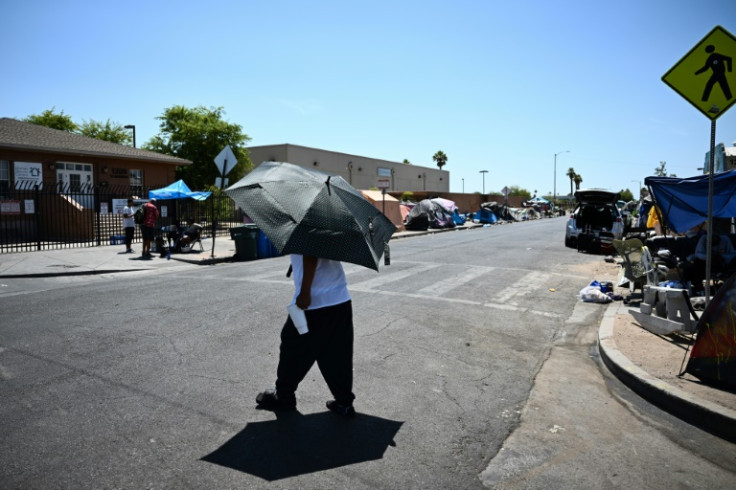
Phoenix routinely experiences some of the highest temperatures in the U.S., and its urban structure is making it feel even hotter. The city hit 115 °F last Wednesday, tying the record for its hottest day set in 1958 and 1934.
Almost half of the city's population lives in what's denominated as an "urban heat island," which can raise temperatures by several degrees and further complicate and already dangerous situation for many.
Research group Climate Central has published an national index, calculating how much hotter it feels in 65 major cities across the country. It found that, overall, 34 million people in those cities live in blocks where the Urban Heat Island index (UHI) is 8°F hotter.
This means that the clustering of buildings, concrete and asphalt absorb more heat than the city would if it had mitigating factors like trees and shade, making it feel hotter for much of the population.
Phoenix had a UHI per capita of 7.4°F. The organization showed that some of the neighborhood with the highest UHI are located in downtown Phoenix and near the Sky Harbor Airport.
Ariane Middel, an ASU professor who has studied urban heat islands, told 12 News that "if you have neighborhoods such as South Phoenix, where you have lots of impervious surfaces and soil and dirt, those neighborhoods get really, really hot." She went on to say that standing under shade can reduce the heat load on a person's body by up to 30 degrees.
Extreme heat is the deadliest weather-related hazard in the U.S., but the concrete amount is often complicated to count due to difficulties in determining without a doubt that deaths were a direct result of heat.
After analyzing CDC data, the Associated Press found that "the death certificates of more than 2,300 people who died in the U.S. last summer mention the effects of excessive heat, the highest number in 45 years of records."
And it's not just deaths. People in some of the hottest places are now also at an increased risk of serious contact burns. Playgrounds, roads and even sidewalks in some areas get so hot that skin contact could result in second-degree and third-degree burns. In some cases they could even be fatal, according to experts.
Streets are often the hottest surfaces, as dark asphalt paving absorbs more sunlight than lighter-colored surfaces. Asphalt can absorb up to 95% of solar radiation, and these types of surfaces can easily be 40 to 60°F hotter than the air temperature on a very hot day.
Surface burns are a nationwide issue but no place records more such incidents than the desert Southwest, Phoenix and Las Vegas standing out.
In the last two years, the Arizona Burn Center at Valleywise Health Medical Center in Phoenix, the largest burn center in the Southwest, has seen an increase of victims treated. In 2022, they admitted 85 patients for contact burns over the summer and in 2023 that number jumped to 136, 14 of whom died. So far this year, the center has already treated 50 patients, with four of them dying.
According to medical experts, the groups that are more susceptible to surface burns include the elderly, children and homeless people. The American Burn Association said that about 40% of patients require surgery to remove the damaged tissue and cover the area with skin grafts.
© 2024 Latin Times. All rights reserved. Do not reproduce without permission.







